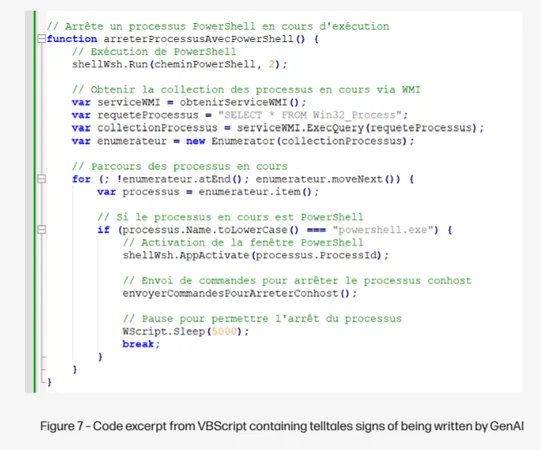
Generative AI Powers New Wave of Phishing Attacks with AsyncRAT Malware
2024-09-24
In a groundbreaking revelation, researchers from HP have unearthed a sophisticated malware dropper generated by generative artificial intelligence (AI) services, which is now being used to facilitate phishing attacks delivering AsyncRAT malware. This discovery raises significant concerns about the evolving tactics of cybercriminals in leveraging advanced technologies.
The AI-generated malware was identified during an investigation into a malicious email, dated June 2024. The phishing attempt was cleverly disguised using an invoice-themed lure, making it more enticing for unsuspecting victims. To bypass security measures, the attackers employed HTML smuggling techniques, delivering a seemingly innocuous encrypted HTML attachment. Notably, they embedded the AES decryption key in JavaScript within the attachment, a tactic that deviates from typical methodologies.
Upon decryption, the attachment closely resembles a legitimate website but essentially acts as a conduit for the AsyncRAT infostealer. It employs VBScript to execute its nefarious functions, which involves modifying the Windows Registry, deploying a JavaScript file set to run as a scheduled task, and creating a PowerShell script to trigger the AsyncRAT payload. This multi-faceted approach showcases the attackers’ intent to embed the malware deeply within the system.
What makes this case particularly alarming is that the code review revealed an unusual trait: the malware creator left extensive comments throughout the VBScript and JavaScript. This is a stark contrast to the usual practice among malware developers, who typically obfuscate their code to hinder analysis. According to HP’s "Threat Insights Report for Q2 2024," the clear and detailed comments suggest that the attacker likely used generative AI to craft the scripts, revealing a troubling trend toward greater accessibility of sophisticated malware development.
“This case exemplifies how generative AI is not only being utilized to improve phishing lures but also to produce actual malicious code,” HP's report highlights. “The detailed structure and names within the scripts indicate that the barrier to entry for creating effective malware is diminishing, thereby facilitating a surge in cyber threats.”
As the landscape of cybercrime continues to evolve with the integration of artificial intelligence, the implications are profound. Cybersecurity experts urge organizations and individuals to remain vigilant and adopt rigorous security practices to safeguard against these increasingly sophisticated attacks.
Stay informed and connected for further updates on cybersecurity trends and revelations. Follow us on social media to get the latest insights!




 Brasil (PT)
Brasil (PT)
 Canada (EN)
Canada (EN)
 Chile (ES)
Chile (ES)
 España (ES)
España (ES)
 France (FR)
France (FR)
 Hong Kong (EN)
Hong Kong (EN)
 Italia (IT)
Italia (IT)
 日本 (JA)
日本 (JA)
 Magyarország (HU)
Magyarország (HU)
 Norge (NO)
Norge (NO)
 Polska (PL)
Polska (PL)
 Schweiz (DE)
Schweiz (DE)
 Singapore (EN)
Singapore (EN)
 Sverige (SV)
Sverige (SV)
 Suomi (FI)
Suomi (FI)
 Türkiye (TR)
Türkiye (TR)